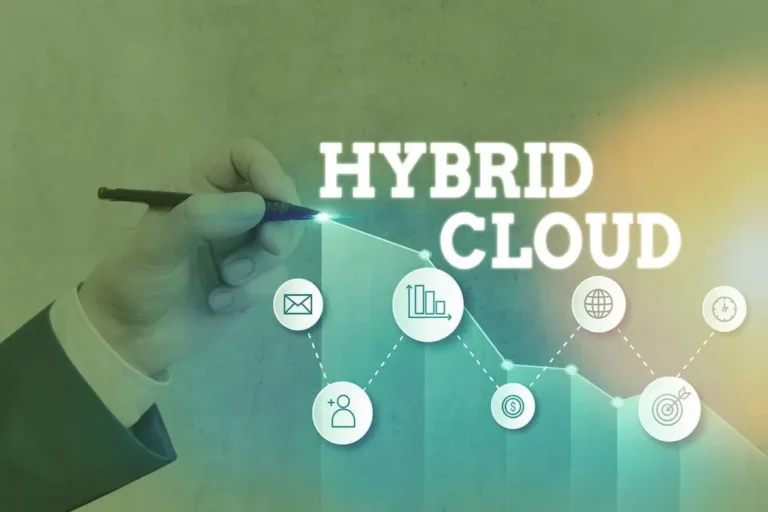Address
304 North Cardinal St.
Dorchester Center, MA 02124
Work Hours
Monday to Friday: 7AM - 7PM
Weekend: 10AM - 5PM
However, the Docker still provides a read-write file system to the image-only file system when creating a container. The photographs may be sourced from Docker Hub, which accommodates thousands of photographs available for public use. Docker Hub’s library has virtually containerization explained any picture you’ll need on your containers and any specific utility want. The above challenges are, of course, exacerbated by either a scarcity of abilities or insufficient assets with such expertise.

Containers are “lightweight,” which means they share the machine’s working system (OS) kernel. This characteristic not only drives larger server efficiencies but also reduces server and licensing prices whereas speeding up start occasions, as there isn’t any AI Agents operating system to boot. Each utility and its associated file system, libraries and other dependencies—including a replica of the operating system (OS)—are packaged collectively as a VM. With multiple VMs operating on a single bodily machine, important financial savings in capital, operational and vitality costs could be achieved. This portability speeds growth, prevents cloud vendor lock-in and offers different notable benefits like fault isolation, ease of administration, simplified security and more.
Containers can be configured to reap the benefits of virtually all out there computing resources and may require virtually no overhead to function. A container picture is a static file that incorporates executable code to run a course of on IT infrastructure. There are container photographs for different use circumstances corresponding to databases, internet servers, operating methods, and more. Container image repositories are public entry points for container photographs, which makes them obtainable to developers who can load a container with these images.

That’s why startups prefer containers for new application growth to achieve a business benefit over competitors who’re still using VMs for utility deployment and packaging. What makes cloud applications efficient is these purposes take full advantage of what the cloud has to offer. Along with high scalability and efficiency, cloud functions are built to be fault-tolerant, and leverage high availability zones to help resilience and business continuity.

Containerization offers the flexibility to operate code in a virtualized or bare-metal environment. Should there be a sudden need to change your environment from steel to digital or vice versa, your containerized functions are already ready to make the change. While Windows variants also exist, they’re comparatively uncommon throughout the business. Additionally, there are also a quantity of instruments to assist handle container orchestration, or the automated management of the container setting. While not the primary focus of this text, it’s still something to remember when contemplating the potential containers have for control and automation of techniques. Serverless computing can improve developer productiveness by enabling groups to concentrate on writing code, not managing infrastructure.
Another good factor about containerization is that it could possibly assist improve the security of your total web application. Due to its set up, containers are isolated from each other as nicely as the host system. As they run in their own environments, they are self-contained and their only interactions are with computing assets. As such, if one container is compromised, this doesn’t end result within the different containers being compromised too.
Like some other sort of software solution, containers include both professionals and cons. For instance, Linux Namespaces helps to supply an isolated view of the system to each container; this includes networking, mount points, process IDs, user IDs, inter-process communication and hostname settings. Namespaces can limit access to any of these resources via processes within each container. Typically, subsystems that wouldn’t have Namespace assist are not accessible from within a container. Administrators can simply create and handle these “isolation constraints” on every containerized software by way of a easy user interface.
As we’ve briefly talked about above, they’re light-weight, fast, and versatile. Now that we have established the difference between virtualization and containerization, let’s take an in depth look at what the benefits of containerization are. Thinking with containers allows builders to reconceptualize their obtainable sources. That may mean squeezing an extra drop of processing from a machine at maximum capability.
A microservice, developed within a container, then gains all the inherent benefits of containerization, such as portability. Other container layers, like frequent binaries (bins) and libraries, could be shared amongst a number of containers. This feature eliminates the overhead of working an working system inside each application and makes containers smaller in capacity and faster to start out up than VMs, driving larger server efficiencies.
The application ought to be in a position to assist this momentary surge within the load. You can add multiple identical containers having the same software packaged inside to handle the load. And because containers are light-weight, it doesn’t take lots of resources to spin up new containers. You can spin a UAT (User Acceptance Tests) surroundings and deploy your containerized utility in a fast time. The agility and quicker deployments allow businesses to quickly roll out new business options and bug fixes to improve buyer experience.
Managing containerized applications is extra easy compared to traditional monolithic purposes. Containers encapsulate every little thing an utility needs to run, making it simpler to trace dependencies and configurations. Container orchestration platforms like Kubernetes offer robust instruments for managing, monitoring, and maintaining containerized purposes at scale.
According to TechTarget, containers can entry an OS kernel without the need for digital machines (VMs). They are also packaged to be portable and dependable, so the identical container can be deployed in any type of computing environment. Since portable purposes use the platform’s supply code to run, containers allow builders to change and track the changes within the platform’s source code, thereby considerably rising productivity. Because of the dimensions and scalability of containers, deployment time is far quicker than traditional digital machines. Also referred to as a runtime engine, the container engine offers the execution environment for container images (read-only templates containing instructions for creating a container). Container engines run on high of the host OS and virtualize the resources for containerized applications.
This avoids the necessity to install application versions that match working techniques. For instance, you would typically need to install a Windows model of a software package deal to run it on a tool with a Windows working system. Containerization lets you sidestep this scenario, because the container is a single software package deal that may run on any system or working system. Containerized applications permit you to immediately add new features, features, and updates without affecting the original application. This means, container expertise permits utility containerization scalability with minimum useful resource usage. In addition to being isolated from each other, containers are also isolated from the host operating system and may interact only minimally with computing resources.
Additionally, it provided builders an simply accessible setting they could use to develop and check in, separate from their main operating system. Virtual machines supplied a major enchancment over physical servers in this regard. They allowed developers to separate the applying from the underlying hardware. You could transfer your virtual machine to a unique bodily machine, and it would still run the identical means.
Transform Your Business With AI Software Development Solutions https://www.globalcloudteam.com/ — be successful, be the first!